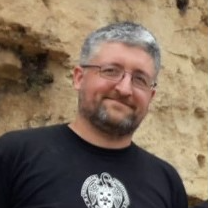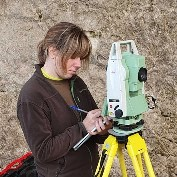Archaeological and Geoarchaeological Heritage and Its Dissemination
A special issue of Heritage (ISSN 2571-9408).
Deadline for manuscript submissions: closed (31 May 2023) | Viewed by 11892
Special Issue Editors
Interests: Palaeolithic; geoarchaeology; hunter-gatherer archaeology
Special Issues, Collections and Topics in MDPI journals
Special Issue Information
Dear Colleagues,
This volume, entitled “Archaeological and Geoarchaeological Heritage and its dissemination”, is focused on research that aims to disseminate information regarding archaeological and geoarchaeological heritage through archaeological research projects. One of the principal goals of every archaeological excavation is to highlight the importance of the excavated and investigated heritage, not only through preservation studies, but also via the dissemination and integration of the abovementionated heritage in a social context. In general terms, this volume is focused on both dissemination in all knowledge areas as well as on specialised education, mainly at the university level.
On the other hand, it is very important to highlight that one of the essential aspects that archaeological and geoarchaeological research should not neglect is the socialization of archaeological heritage, which is dependent on the incorporation of local communities for defense and preservation through various dissemination and cultural promotion tools.
The article that will be included in this Special Issue address all of these dimensions of heritage research, covering a wide temporal and chrono-cultural spectrum that analyses different types of archaeological and geoarchaeological heritage, starting from Prehistory to recent times, and understanding these types of heritages as a indissoluble combination when investigating archaeological sites.
Prof. Dr. David Álvarez-Alonso
Prof. Dr. María De Andrés-Herrero
Guest Editors
Manuscript Submission Information
Manuscripts should be submitted online at www.mdpi.com by registering and logging in to this website. Once you are registered, click here to go to the submission form. Manuscripts can be submitted until the deadline. All submissions that pass pre-check are peer-reviewed. Accepted papers will be published continuously in the journal (as soon as accepted) and will be listed together on the special issue website. Research articles, review articles as well as short communications are invited. For planned papers, a title and short abstract (about 250 words) can be sent to the Editorial Office for assessment.
Submitted manuscripts should not have been published previously, nor be under consideration for publication elsewhere (except conference proceedings papers). All manuscripts are thoroughly refereed through a single-blind peer-review process. A guide for authors and other relevant information for submission of manuscripts is available on the Instructions for Authors page. Heritage is an international peer-reviewed open access monthly journal published by MDPI.
Please visit the Instructions for Authors page before submitting a manuscript. The Article Processing Charge (APC) for publication in this open access journal is 1600 CHF (Swiss Francs). Submitted papers should be well formatted and use good English. Authors may use MDPI's English editing service prior to publication or during author revisions.
Keywords
- prehistoy
- hunter-gatherers
- ancient history
- excavation
- medieval age
- GIS, 3D reconstruction
Benefits of Publishing in a Special Issue
- Ease of navigation: Grouping papers by topic helps scholars navigate broad scope journals more efficiently.
- Greater discoverability: Special Issues support the reach and impact of scientific research. Articles in Special Issues are more discoverable and cited more frequently.
- Expansion of research network: Special Issues facilitate connections among authors, fostering scientific collaborations.
- External promotion: Articles in Special Issues are often promoted through the journal's social media, increasing their visibility.
- Reprint: MDPI Books provides the opportunity to republish successful Special Issues in book format, both online and in print.
Further information on MDPI's Special Issue policies can be found here.






